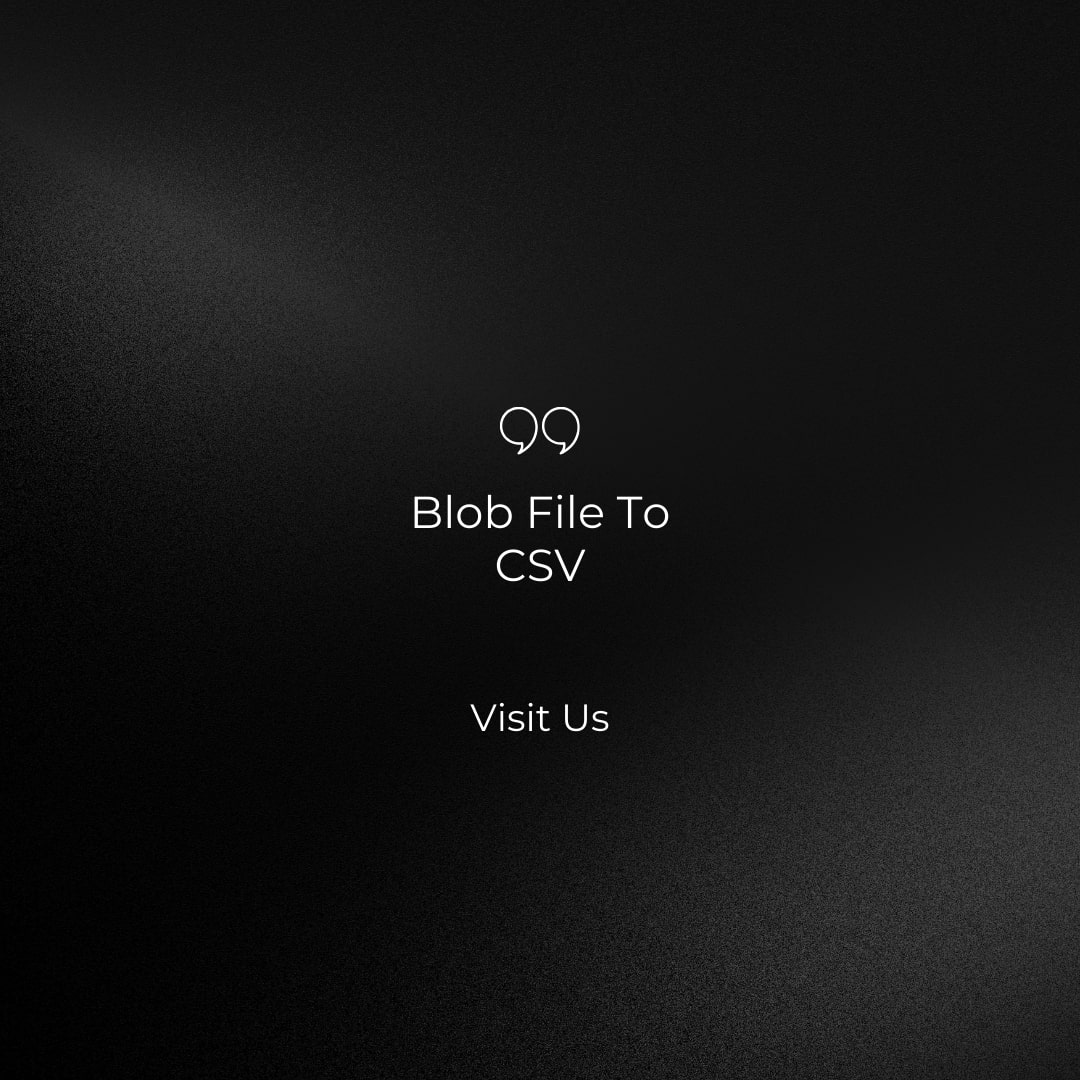Introduction On Blob File To CSV
In our data-driven world, information is power, and the ability to extract insights from diverse datasets is invaluable. However, the data we seek is not always readily accessible, often residing within Blob files—binary data containers that can be as challenging as they are versatile. But, In this latest guest post, we embark on a journey into the world of data transformation, exploring the process of converting Blob file to CSV. This technical maneuver is your key to unlocking data potential, simplifying analysis, and making informed decisions.
Understanding Blob Files
Before we delve into the conversion process, it’s essential to grasp what Blob files are. Blob, an acronym for Binary Large Object, represents a data type used to store binary data, such as images, documents, or multimedia files, within databases. These files, though rich in data, remain non-human-readable and present unique challenges when it comes to data extraction and utilization.
Why Convert to CSV?
Converting Blob files to CSV (Comma-Separated Values) brings a plethora of benefits:
- Structured Data: CSV is a structured data format, presenting data in a tabular, human-readable layout that simplifies data interpretation and analysis.
- Universal Compatibility: CSV files enjoy universal support across various software applications, databases, and data analysis tools, making them an ideal choice for data interchange and integration.
- Efficient Data Handling: CSV’s structured nature facilitates efficient data handling, making it suitable for working with large volumes of data.
The Technical Process
Let’s break down the technical steps involved in converting Blob files to CSV:
- Identification: Begin by identifying the specific Blob data you wish to convert.
- Database Query: Employ SQL or an equivalent query language to retrieve Blob data from the database.
- Conversion Tool or Script: Utilize a Blob to CSV conversion tool or craft a custom script (e.g., using Python) to extract Blob data and convert it into CSV format.
- Data Validation: Thoroughly validate the converted data, ensuring its accuracy, completeness, and adherence to data standards. This step may encompass error handling and data cleansing.
- CSV Utilization: Import the resultant CSV file into your preferred data analysis tool, database, or application for further processing and analysis.
Technical Advantages of Conversion
- Data Transformation: During the conversion process, data transformation and cleansing can be seamlessly incorporated, aligning data with specific requirements.
- Efficiency: CSV files excel at handling large datasets, optimizing data efficiency and facilitating complex analyses.
- Version Control: CSV files can be effectively version-controlled, enabling collaboration and tracking changes within data files.
- Automation Potential: Once the conversion process is established, it can be automated and scheduled to handle routine data updates and processing.
Conclusion
Converting Blob files to CSV represents a pivotal technical skill in the modern data landscape. This process empowers professionals to overcome the complexities of Blob data, enhancing accessibility, streamlining data transformation, and enabling seamless integration with an array of data analysis tools. However, In an era where data insights steer critical decisions, mastering the art of converting Blob to CSV is your key to unlocking the data potential within these binary containers. It’s time to harness the full power of your data for informed, data-driven decision-making.

